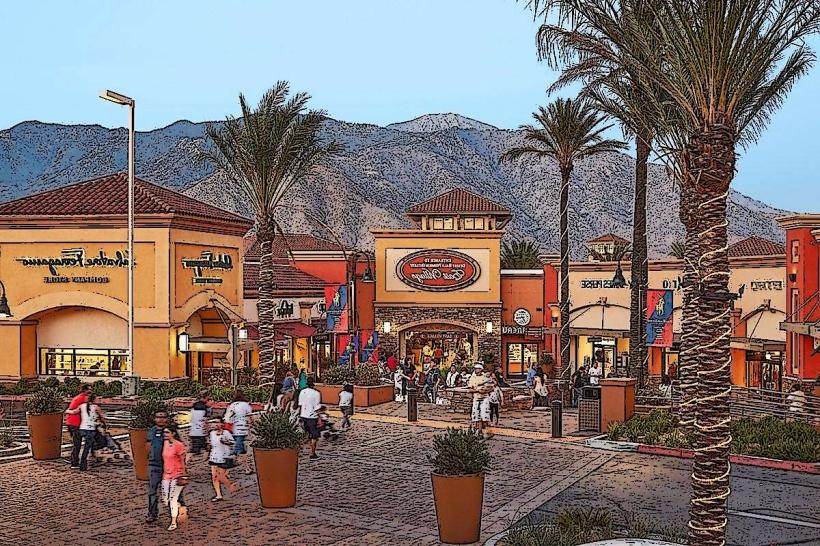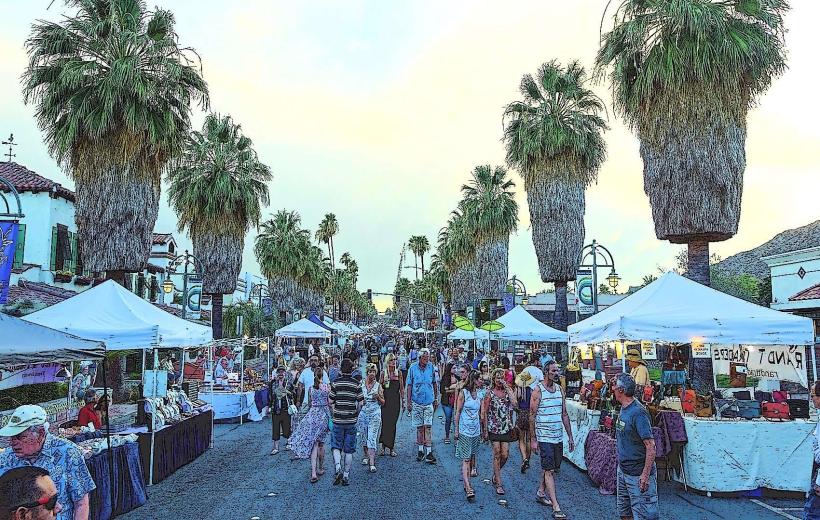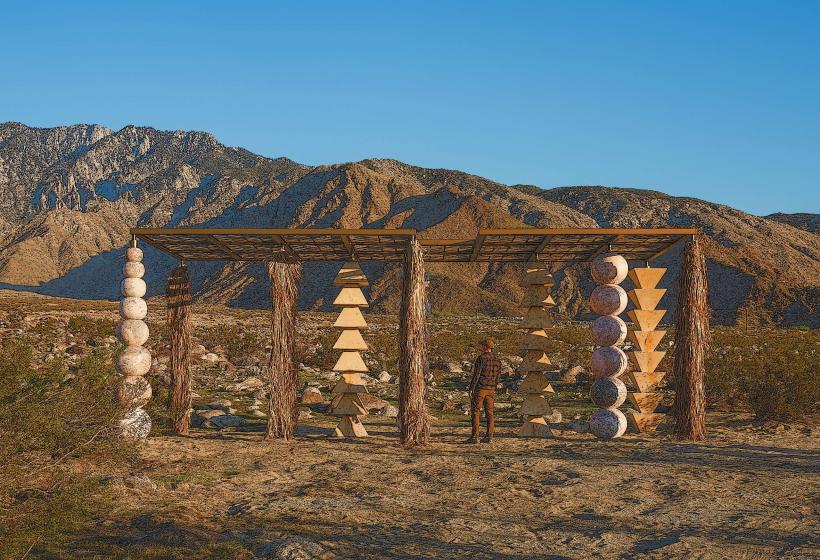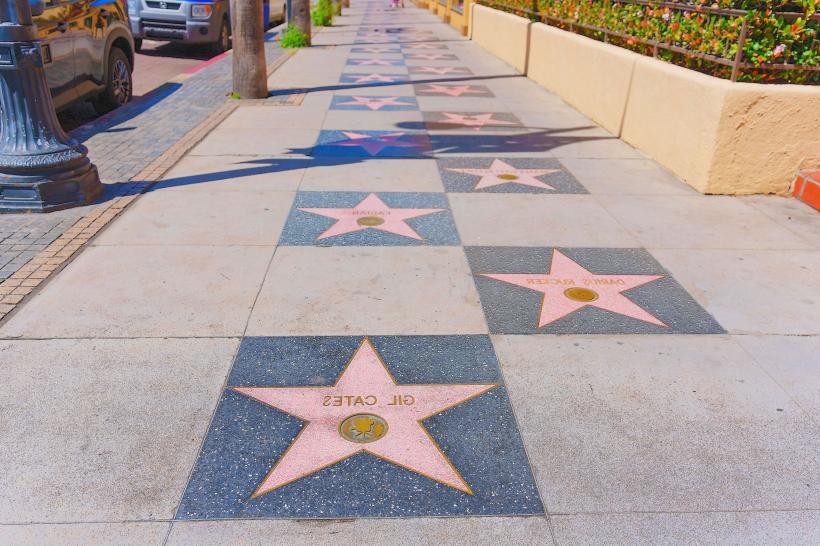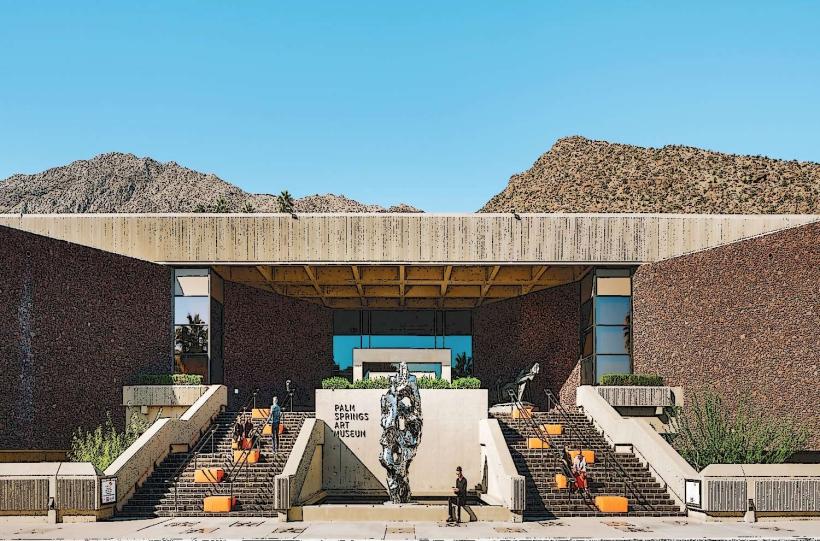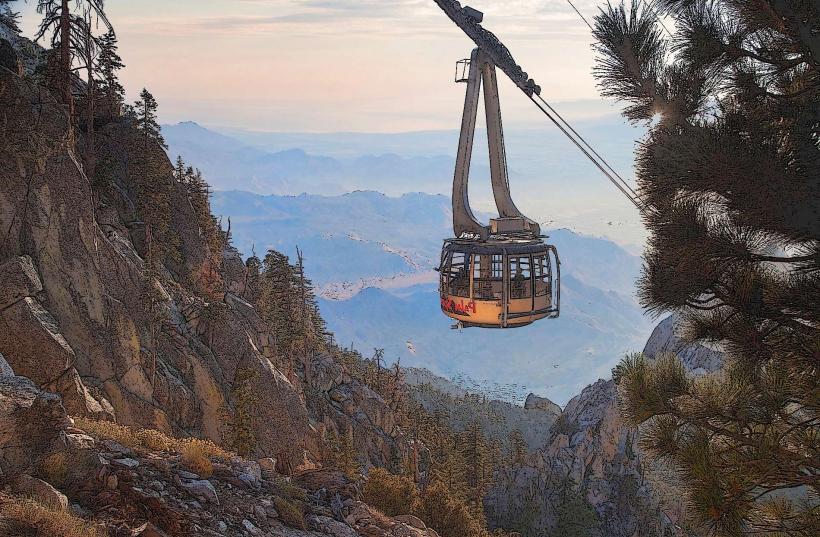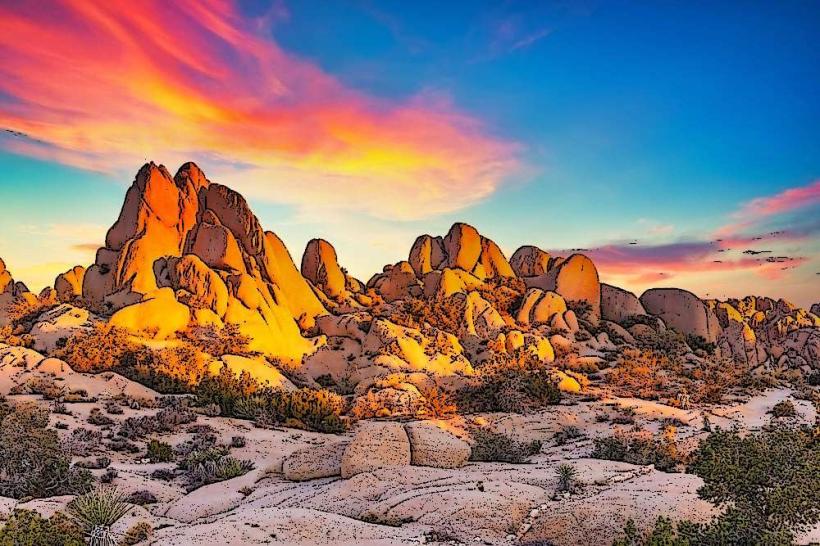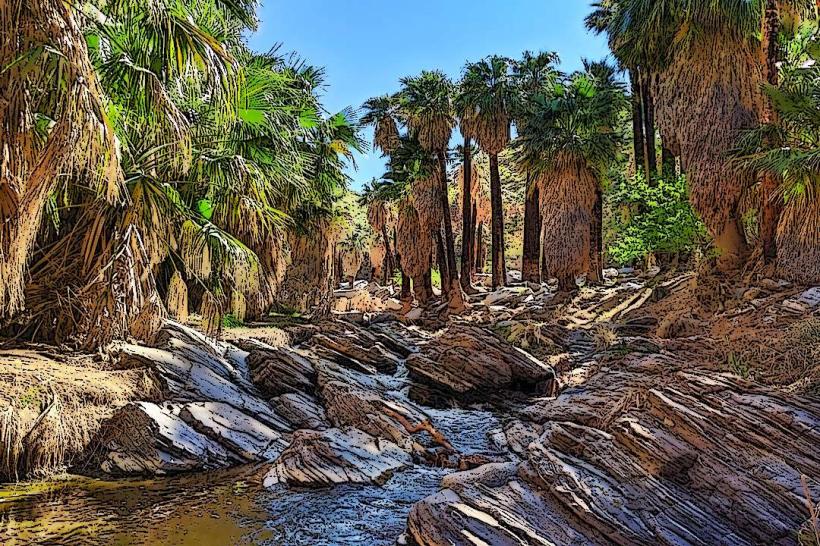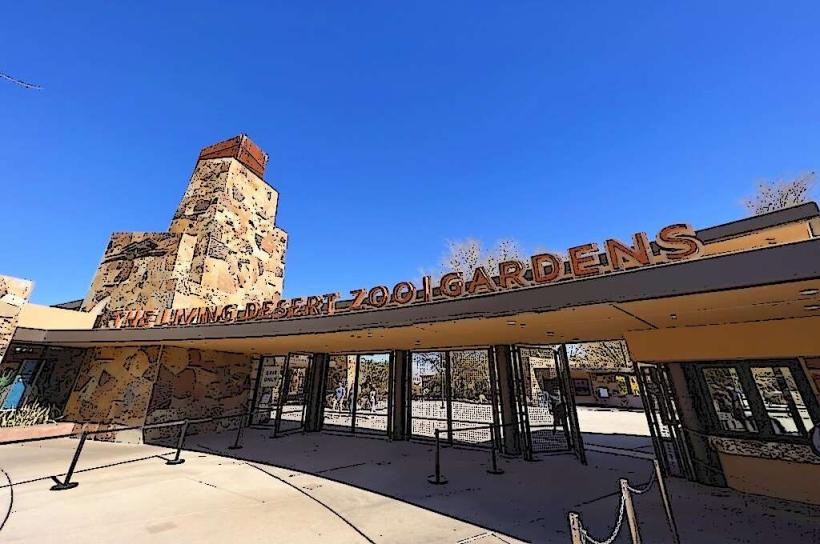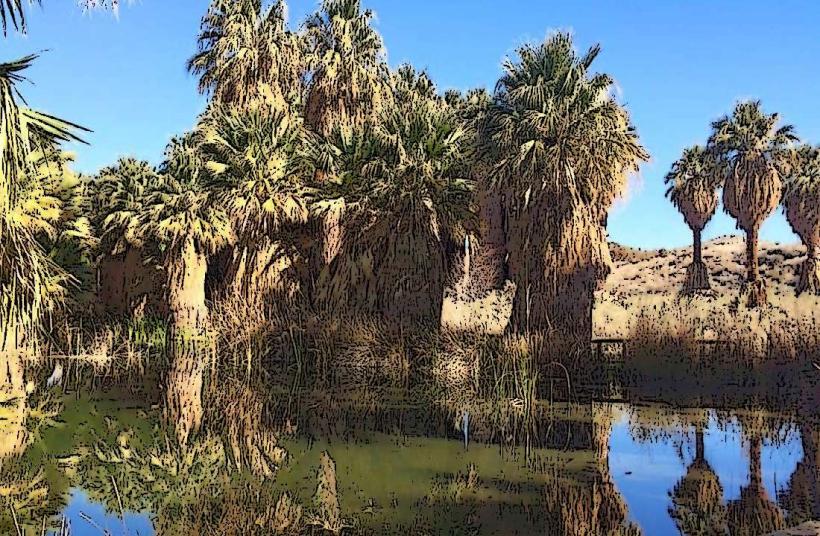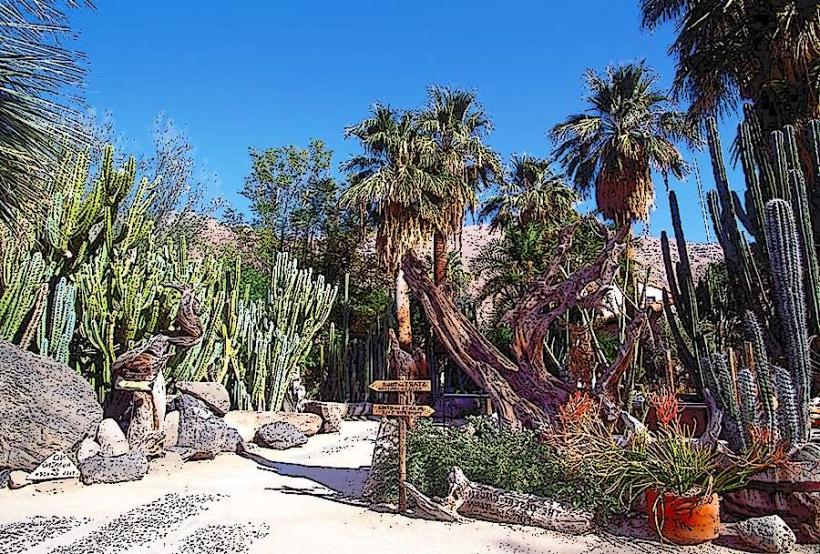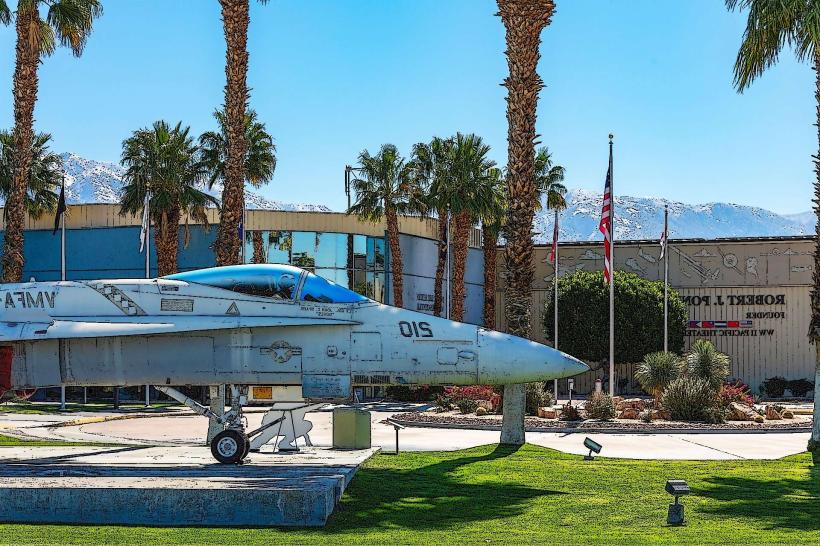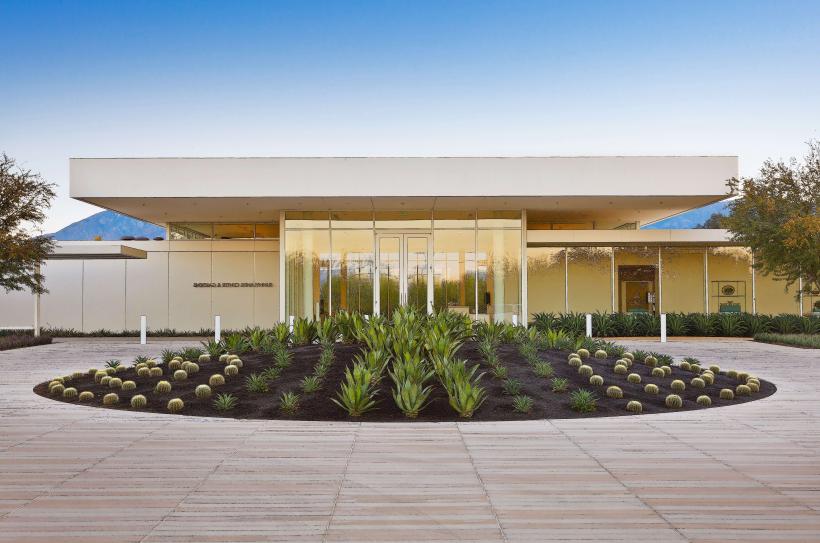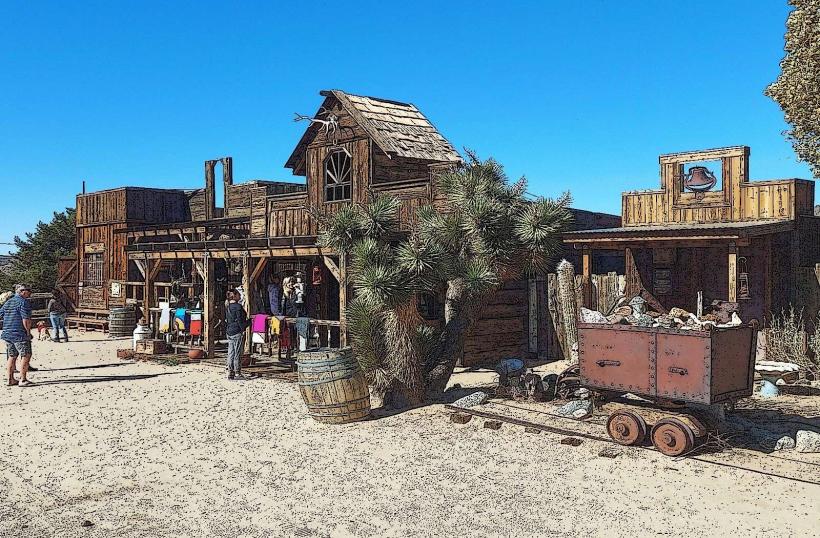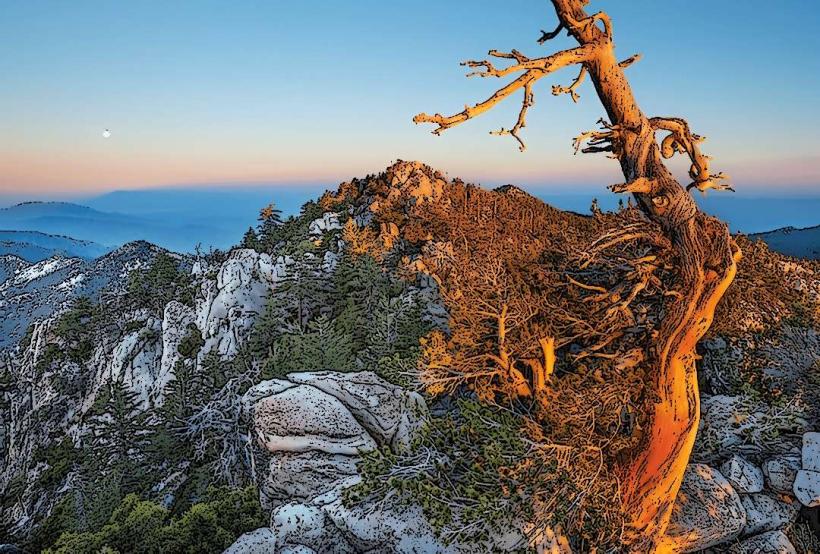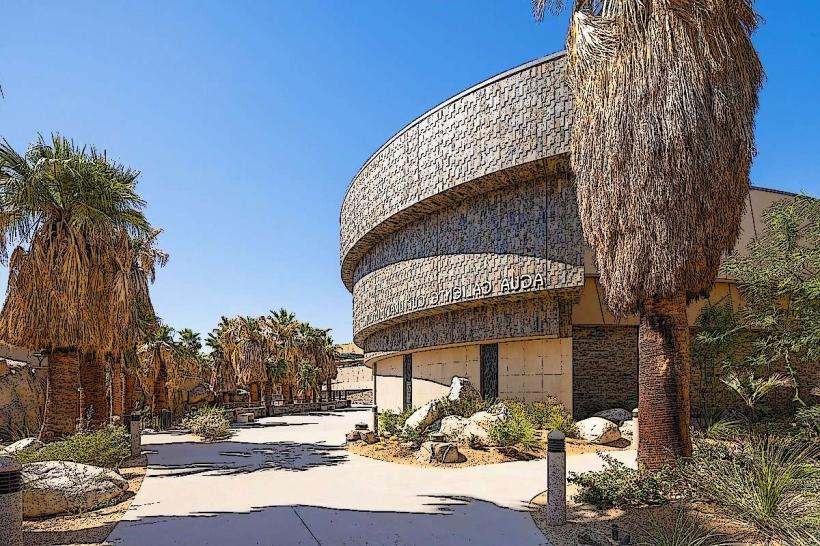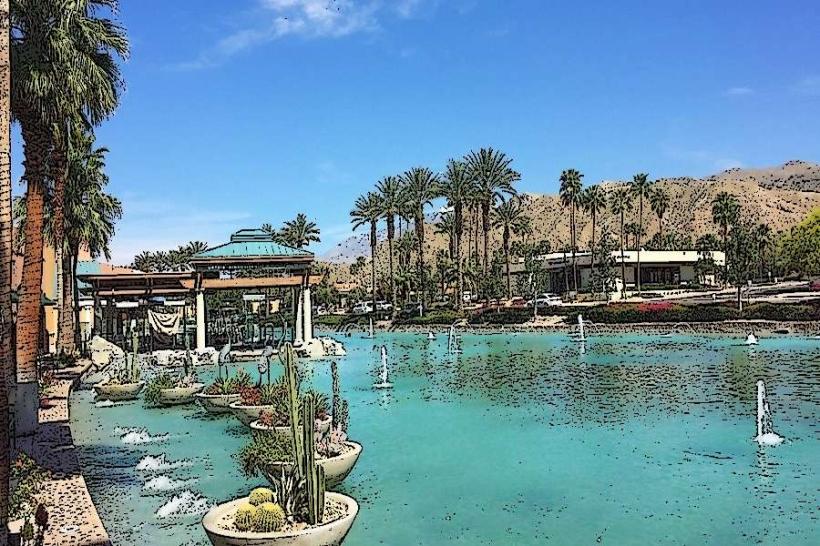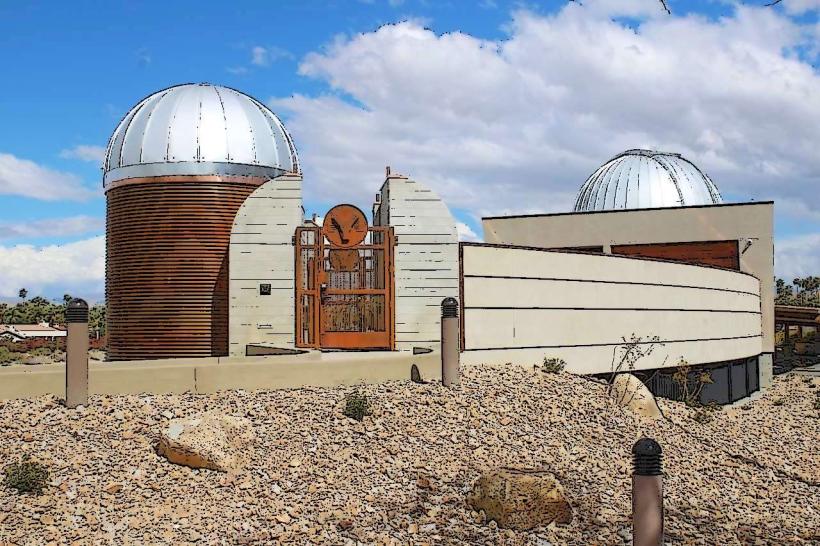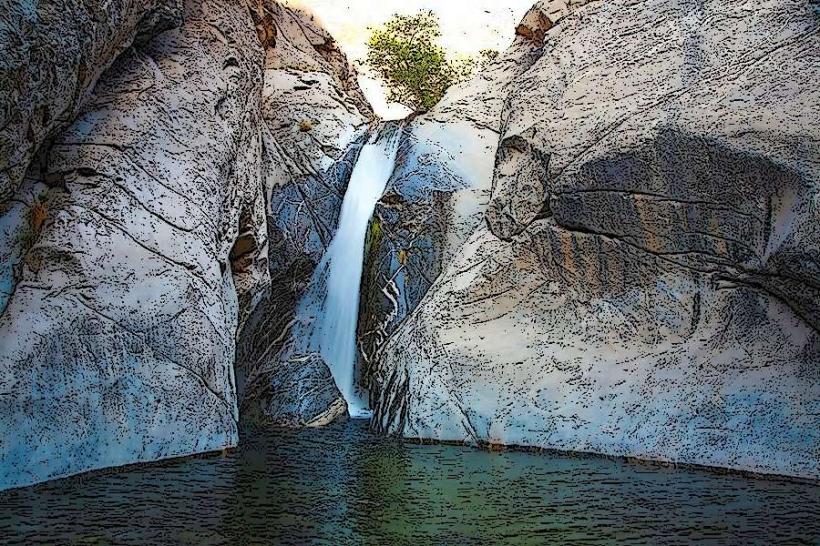Information
Landmark: Cabot’s Pueblo MuseumCity: Palm Springs
Country: USA California
Continent: North America
Cabot’s Pueblo Museum, Palm Springs, USA California, North America
Cabot's Pueblo Museum is a fascinating historic site located in Desert Hot Springs, California. It was built by Cabot Yerxa, an early 20th-century homesteader and explorer. The museum is housed in a unique Pueblo Revival-style structure that reflects Yerxa’s vision, blending both Native American architecture and his personal experiences. The museum showcases both the remarkable architecture of the house itself and the life of Yerxa, including his travels and the diverse influences he absorbed.
History and Architecture
Cabot Yerxa began construction of the museum in 1941, using local materials from the surrounding desert. The house itself is a four-story, 5,000-square-foot structure with 35 rooms, 150 windows, 65 doors, and 30 roof levels. Yerxa was inspired by Native American pueblos, particularly the Hopis and Zunis, and integrated their architectural principles into the design. The building is cleverly constructed to maintain coolness during the harsh summer heat, incorporating ventilation shafts, natural light, and a passive cooling system that harnesses the desert’s natural elements.
The structure is an impressive feat, particularly considering it was built by one person. Yerxa used a mix of reclaimed materials, including stone, adobe, and other desert resources, making the building blend seamlessly with its environment.
Museum Highlights
Native American Artifacts and Exhibits: The museum features an impressive collection of Native American and Alaska Native artifacts. These include pottery, tools, and artworks that provide insight into the indigenous cultures of the region. In addition, there are exhibits detailing Cabot Yerxa’s life, travels, and his unique contributions to the area.
Cabot Yerxa’s Art: Yerxa was also an artist, and the museum displays his paintings and sketches that reflect his time in the desert and his travels. His artwork often captured the beauty of the surrounding landscapes and the Native American cultures that inspired him.
Waokiye Sculpture: One of the standout features of the museum grounds is the Waokiye Sculpture. This 43-foot-tall sculpture was carved by artist Peter Wolf Toth from a 45-ton sequoia log. The sculpture represents a Lakota word, "Waokiye," meaning “traditional helper”, and is part of the Trail of the Whispering Giants, a series of sculptures created by Toth to honor Native American culture. The sculpture is the only one remaining in California, making it an important cultural landmark in the area.
The Pueblo Structure: Beyond its fascinating artifacts and collections, the museum itself is a living history of Cabot Yerxa’s life and vision. The structure offers a glimpse into the past and provides visitors with an immersive experience of how Yerxa lived, worked, and contributed to the local community.
Hours of Operation and Admission
October 1 – May 31:
Open Tuesday to Sunday, from 9:00 AM to 4:00 PM (Closed on Mondays)
Tours are available at 9:30 AM, 10:30 AM, 11:30 AM, 1:30 PM, and 2:30 PM.
Admission: $13 for adults, $11 for seniors, active military, and children ages 6-12.
Tickets are sold on a first-come, first-served basis, and each tour is limited to 12 people. The tour typically lasts around 55 minutes.
June 1 – September 30:
Open Wednesday to Saturday, from 9:00 AM to 1:00 PM (Closed on Sunday and Tuesday)
Tours are available at 9:30 AM, 10:30 AM, and 11:30 AM.
Admission: $13 for adults, $11 for seniors, active military, and children ages 6-12.
Location
The Cabot’s Pueblo Museum is located at:
67616 Desert View Avenue, Desert Hot Springs, CA 92240.
For more information or to make a tour reservation, you can reach the museum at (760) 329-8100.
Additional Information
The museum offers guided tours that provide deeper insights into the history of the building and Cabot Yerxa’s life. The Waokiye Sculpture is also an important highlight that connects the museum to a larger cultural movement, honoring Native American heritage and art.
The museum is a popular destination for those interested in desert architecture, Native American culture, and local history. It provides a unique perspective on life in the desert during the early 20th century, especially through the lens of Yerxa's creative and pioneering spirit.
Conclusion
Cabot's Pueblo Museum is not only a testament to the vision and determination of its creator, Cabot Yerxa, but also an important cultural and historical landmark in Desert Hot Springs. The museum offers a unique blend of architecture, art, and Native American heritage, making it a fascinating destination for anyone interested in desert life, history, and architecture.

